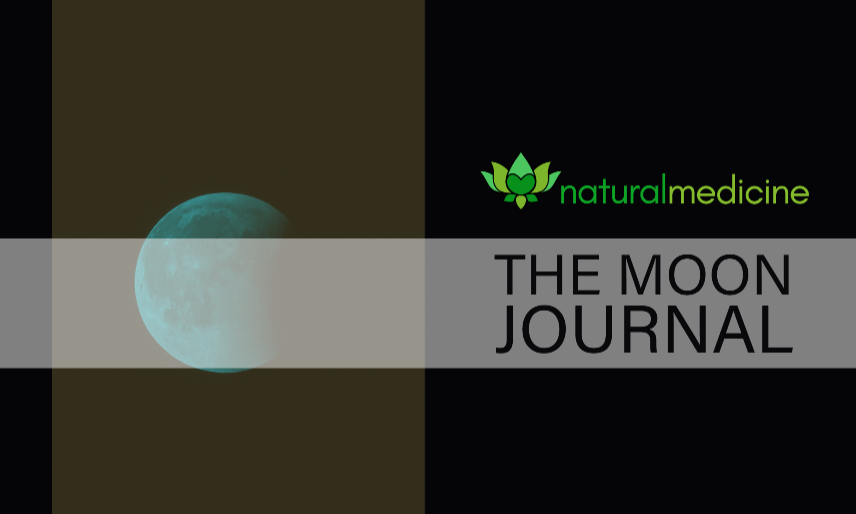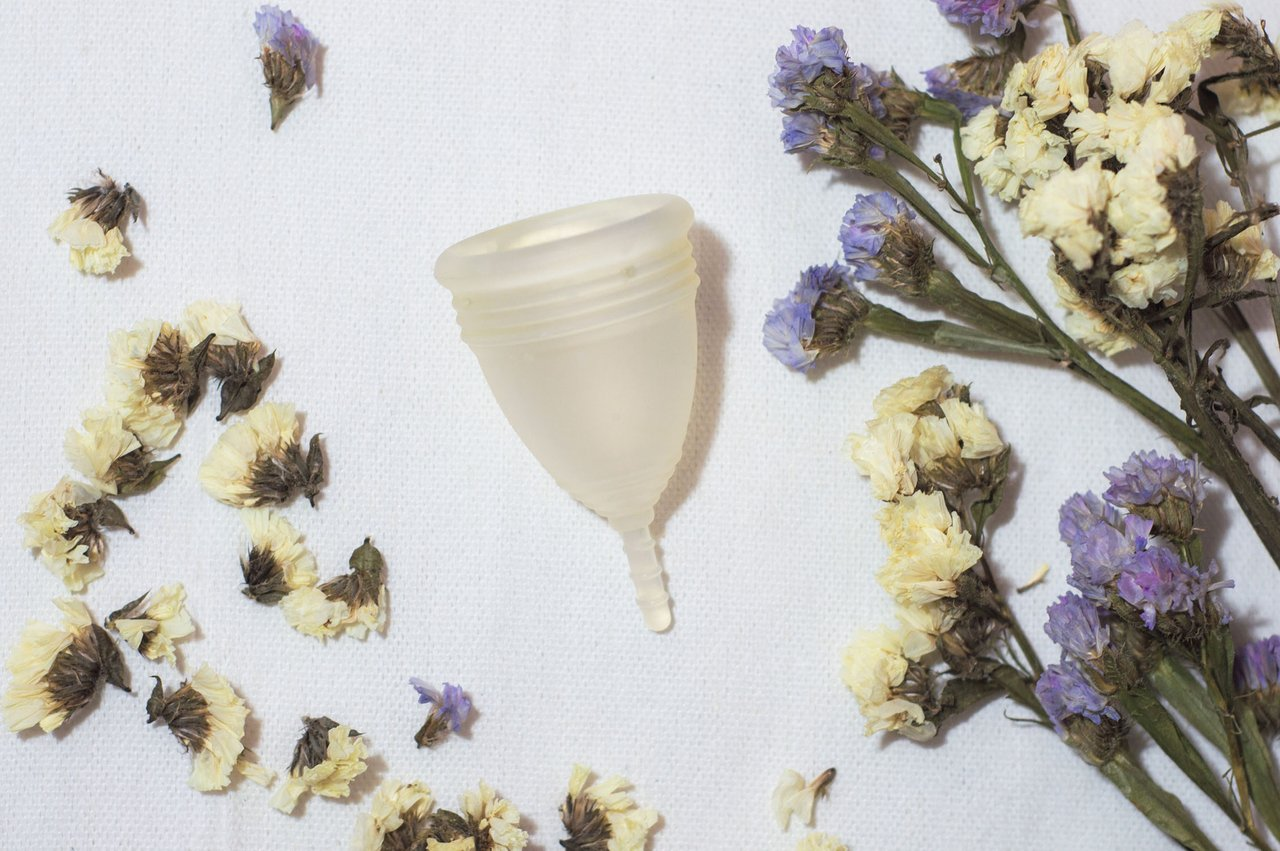
I've wanted to write about my love of menstrual or moon cups for a long time on HIVE, and it's ironic that I'm finally doing so just as I am reaching the end of my menstruating life. My moon cup sits in a drawer in the bathroom, having not been used for four months. I bought it at a market in Devon nearly twenty years ago. One product, twenty years. Not bad. I'm not sure what to do with it now - it's not something you can pass on, is it? I feel a strange sense of grief to say farewell to this feminine hygiene product - not because I'm particularly attached to the object, but because I'm attached to what my moon time or monthly cycle represents - fertility, womanhood, nature, a connection to all woman across all time. But that's another story.
This story is more about asking you to question what sanitary products you use, particularly cotton tampons. I'm not here to criticise you if that's the only product that works for you - you should never be shamed for this - but asking you to consider an alternative, if you have this luxury of choice.
One of the things I loved about my moon cup is that it cost me 50 bucks. A one time purchase, and preventing myself bleeding over the car seat or my jeans was sorted for life. That cup never bled over. In fact, I'd swish it out once a day, rinse it in a bit of vinegar, and it was ready to go again. Sure, it could get a little messy if I was out and my flow was a little heavier (try being at a club and trying to clean your cup a little before re-insertion, then wiping blood off your hands before exiting the loo) but we can be squeamish when it comes to something so natural. I've never been one to be ashamed or repulsed by my bodily fluids, and I hope you are okay with that too.
But yeah, 50 bucks. These days they can be even cheaper - check out this organic one for only $20.
In her lifetime, according to a study by OnePoll1, a woman will spend up to 5000 pounds (that can be up to $7,000 USD or over 9,000 Aussie dollars) on sanitary products in their life time. Many believe that these products should be subsidised by the government, especially as 'period poverty' is actually a thing - woman often scrimp to afford something that is a necessity.

Image by @hiddenblade
Whilst I've never really had to scrimp for tampons (and I've never been adverse to just using a wad of toilet paper if I'm caught short) one of the costs that always really bothered me was that the environmental cost. Did you know that that synthetic pads and tampons can take around 500 to 800 years to biodegrade?Or that pads and tampons are responsible for about 200,000 tonnes of waste per year – most of which contains plastic?2 One argument is that we can switch to organic cotton products in cardboard boxes not wrapped in plastic and do away with plastic applicators. It's something, of course, but cotton's a bit of an environmental evil.
According to Project CECE, a website about ethical clothing choices, cotton
uses around 6% of the world’s pesticides and 16% of all insecticides, which is more than any other crop. Extremely harmful to the environment, they contribute to greenhouse gas emissions and pollute thousands of litres of drinkable water. As found by the World Health Organization, the most common insecticides used in cotton production even include three of the most hazardous chemicals! These toxic substances result in health risks for cotton farmers and inhabitants of nearby villages, and their use has been causing an increase in miscarriages, malformations and cancer in those areas. Basically, not only is cotton bad for the environment: its production is also unethical.3
It also uses a ridiculously high amount of water (a whopping 2,700 litres of make a single cotton tshirt!) and this water is often diverted from other agriculture, and it contributes to soil degradation and uses an extensive amount of land. Chemical free or no, it still has a massive impact on the environment.
Here's a few more factlets about cotton. I'm not trying to guilt you here - just trying to encourage you to consider what it means to bleed in this world.
- Globally, 35 million hectares of cotton are under cultivation.4
- In 2020, the Aral Sea, once one of the largest lakes in the world, has almost entirely vanished as it's water has been used for cotton production. The Indus River in Pakistan loses 97% of the river water because of the cotton industry. And the US? Groundwater levels have dropped 8 feet between 2004 and 2014 as a result of cotton’s water consumption during periods of drought.5
- If you aren't worried about the water, think of the pesticides. If you live around the Aral Sea, your people are suffering the highest rate of throat cancer in the world - a direct result of inhaling pesticide filled air.6

Image by @hiddenblade
Of course, if you're buying organic tampons, you'd hope that half of these issues might not be relevant. And you're right - to some extent. Less pesticides in higher rainfall areas mean less water consumption and impact on workers. But be careful of greenwashing - 'organic' can mask the fact that cotton still uses up a lot of water and because they don't use as many pesticides, they have to plant more - and therefore use more land.
Whilst I might be a huge advocate for a moon cup, I'm also now down the rabbit hole of ethical and sustainable clothing purchases. Of course, I'm asking you to do the same - in an ideal world, we would all be conscious consumers. I'm asking you to give it a go.
You might like to read the following articles by HIVE woman about trying menstrual cups - this one by @hiddenblade, who gives a very detailed review of her first time purchase and use of one, or this this one by @arlinn on why she's never going back after using one.
Whilst it's time for me to say goodbye to mine, I hope you might be compelled to experiment with, and perhaps fall in love with, your own moon cup.
It's not only kind on your wallet, but on the environment too - let alone how darn convenient it is. I understand that for various reasons, it might not be for everyone, but if it is for most woman, imagine what difference that could make toward a more sustainable world?

This is the first of the new Moon Journal editorial on HIVE, which has been shifted to a once fortnight position on Fridays via @naturalmedicine. @danielapevs has had to relinquish her role due to real life committments, and we thank her for discussing woman's health issues on HIVE this year. We'll be featuring stories, articles, advice and issues written by HIVE woman every two weeks. If you have something to say, get in touch - we pay 60 percent beneficiary to YOU for your efforts. The rest goes to making this collective what it is - a place to share, create abundance and to learn from each other on our wellness journeys and in our interactions with the earth.
Each fortnight this editorial offers a 5 percent beneficiary to one HIVE woman. This week it's @hiddenblade - thankyou for your wonderful article and for the use of your photos.
Earn Instantly For Writing Natural Health Content
Earn LOTUS and HIVE rewards for sharing your natural health content on www.naturalmedicine.io. If you don't already have a HIVE account, you can sign up for FREE here. We support writers sharing about herbalism, TCM, yoga, meditation, vegan and other healthy diets, as well as earth centred practices such as foraging, permaculture and biodynamics - read more about us here!

DelegateIICommunityIIDiscordIILotuschat
Originally posted here: https://hive.blog/hive-120078/@naturalmedicine/on-a-sustainable-choice-woman-can-make-and-saying-goodbye-to-mine



No comments:
Post a Comment